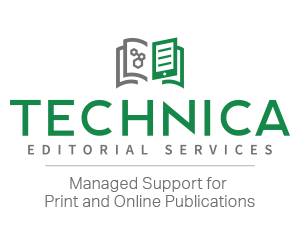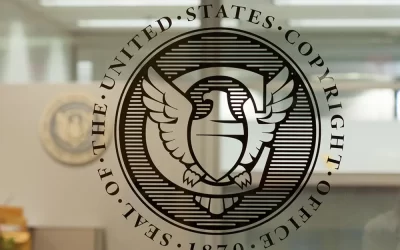Getting rejected stinks. Wouldn’t it be great if we could appeal people’s decisions in life? Imagine asking someone on a date and getting rejected. What if you could submit an appeal letter explaining your argument with data to back it up? If only. Well, in science, you can.
As an editorial assistant, I’ve seen quite a few appeal letters submitted to my editors. While most are well-written scientific responses, some are emotionally driven criticisms of the non-science kind. Rage and disappointment seep off the page. Scientists have an incredible amount invested in their work but personal attacks on the editors or reviewers will not overturn a rejection. In this brief piece, it is my aim to explore appeals in the scientific community and their place in the peer review process, and conclude with a bit of advice we can all take away.
Scientific work can be quite difficult. In fact, I’m of the opinion that we should all be out there thanking scientists every day. What they do is hard enough and, on top of that, they’re expected to publish, which is no easy feat.
Dr. Daniel Kohane, Associate Editor of Nano Letters, likens publishing to dating.
“Quite frankly, one accepts the fact there is a certain amount of subjectivity. It’s very much like dating. You have a general sense of what league you’re in. Most authors take rejection as part of the game.”
Of course, this is much easier said than done. Dr. Jillian Buriak, Editor-in-Chief of Chemistry of Materials, explains that getting rejected isn’t easy in an article about her journal’s appeal process.1
“Having one’s paper declined is far from a pleasant experience and, as we know personally, the experience stimulates a range of emotions and reactions.”1
I am certainly not faulting authors for the deep disappointment and frustration that a rejection letter can cause, nor am I suggesting that authors should refrain from appealing. Dr. Kohane notes that, “people have a right to appeal. The paper is the fruit of their hard work. They have a right to advocate for themselves.”
Editors and reviewers are people just like authors. In other words, they make mistakes. Sometimes, they miss a point and an appeal gives the author an opportunity to expand upon that point. As Dr. Paul Weiss, Editor-in-Chief of ACS Nano, explains in his own breakdown of appeals, “Sometimes, we overlook a key aspect of submitted work; we have found that appeals help us identify these papers, and several have ultimately been published.”2
Dr. Kohane personally experienced this when he appealed a peer reviewed paper of his that was rejected.
“One of the reviewers just completely shot [the paper] down. It was just a rogue reviewer—as if someone said, we don’t need antibiotics. In fact, the paper was accepted.”
If the editors or reviewers have missed a point, it could be that the authors need to revise their work. Dr. Prashant Kamat, Deputy Editor of the Journal of Physical Chemistry Letters (JPCL), explains “the authors need to realize that the origin of this misunderstanding may lie in his/her presentation of the results.”3 Dr. Weiss echoes this sentiment, noting that, “As scientists and authors, it is up to us to make ourselves understood in our writing and otherwise.”2
I spoke with a managing editor/freelance scientific writer who talked about the value of appeals from an author’s standpoint. For the authors, appealing is always worth it. Authors may wish to challenge a disappointing decision if the reviews in the decision letter appear bland. It’s possible that the reviewers shared more detailed information with the editors that was not included in the rejection letter. Moreover, the often nuanced language in rejection letters can be a big obstacle to non-native English speakers.
Appeals are helpful to more than just authors. They can occupy an important place in the scientific community. In his own article on appeals in ACS Nano, Dr. Weiss highlights their importance.2
“Appeals effectively give us a series of live case studies of how we understand the state of nanoscience and nanotechnology, as well as a way to move ACS Nano forward.”2
We’ve seen that appeals can and should be included in the peer review process, but what should they look like? As I mentioned, I’ve seen attacks on the editor and the reviewers as well as personal notes that do not deal strictly with the science at hand.
In an article on the review process for JPCL, Dr. Kamat explained that authors should refrain from making nonscientific remarks, such as “the reviewer is not qualified” or “he/she has a biased opinion.”3 Dr. Kohane expressed similar concern about the importance of being professional: “Appeals that are not successful are those that are scientifically weak and where either side is disrespectful or unreasonable.”
A managing editor I spoke with agrees that an effective rebuttal letter should be professional and objective, provide data refuting the reviewers’ concerns, and include evidence supporting any claims of bias. The letter should thank the editors and the editorial board for their expertise.
My colleague noted, “(the appeal letter) gives points not understood by the reviewer, does not take the one positive reviewer comment and run with it. It deals with the real content of the reviews and addresses it now or says we can address it.”
What these letters should avoid are personal attacks, attempts to identify reviewers, emotional appeals, and cosmetic changes. Dr. Kohane echoed this sentiment, noting that appeals should be polite and constructive, or rather, factual: “Politeness is important because the editor has put a lot of time and effort [into reviewing the paper], and to be rewarded by a rude email, that just doesn’t help. Also, odds are the editor wants to help you but needs rational ammunition to do so.” This ammunition does not come in the form of attacks. It comes directly from the data.
One managing editor/freelance scientific writer I spoke with concurs that “generally, the editor-in-chief is on your side.” Editors will help if there is a reasonable argument for further review, rooted in the work itself. Dr. Weiss, in his article on how appeals are handled in ACS Nano, recommends highlighting the novelty of the work and the broad interest of the work in addition to addressing referee comments.2
So, what should authors know going forward? Being polite is key. Sticking to the facts and avoiding personal attacks is also imperative. Appeal processes may vary depending on the journal. Authors should keep in mind that the response time frame may also vary, as additional input from specific content editors or reviewers may be necessary. It is important to remember that editorial offices cannot change the decision on a manuscript; rather, they can be used a resource for the process.
It should also be stressed that editors and reviewers aim to treat manuscripts the way they hope their own would be treated.1 Editors and reviewers understand what it’s like to be on the other side of the decision letter.
As a final takeaway, a managing editor/freelance scientific writer I spoke with recommended that authors should wait 24 to 72 hours before responding to a decision letter—then re-read the email. This simple process will remove much of the personal bias that could pollute appeals letters written in rage or disappointment.
What allows the peer review process to operate honestly and effectively is for authors, reviewers, and editors to respect their distinct roles and to appreciate each other’s profound contribution to published works and the general scientific dialogue. Rejection is disappointing, but remaining polite and professional is essential. Courtesy occupies an important place in the peer review process. It is my hope that all involved in the peer review process will pause, think, and reflect on the points raised here before writing or reviewing their next appeal letter.
It is acknowledged that this article was originally published in the March 2015 issue of the International Society of Managing and Technical Editor’s (ISMTE) Editorial Office News and republished with their permission. This paper is intended for review and comments only. It is not intended for citation, quotation, or other use in any form. All citation and quotation should be attributed to the article’s original publisher.
References
1.) Buriak, J.M. Appealing Chemistry: How Our Appeals Process Works. Chem. Mater. 2014, 26 (14), 4045-4045; DOI 10.1021/cm5024103
2.) Weiss, P.S. How We Handle Appeals and Why. ACS Nano. 2014, 8 (3), 1951-1952. DOI 10.1021/nn501422p
3.) Kamat, P.V.; Scholes, G.; Prezhdo, O.; Zaera, F.; Zwier, T.; Schatz, G.C. Overcoming the Myths of the Review Process and Getting Your Paper Ready for Publication. J. Phys. Chem. Lett. 2014, 5 (5), 896-899; DOI 10.1021/jz500162r




